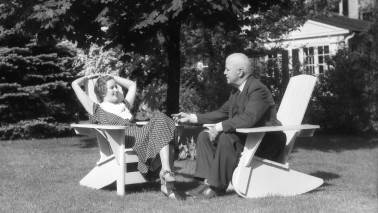Utopia dons some unlikely guises, crops up in some odd places. On the sea wall a couple in their teens stood clutching their baby and gazing half a mile across the opaque river to where streets run down to the shore: spires and warehouses, inns and gables announced a town. The boy asked me if I knew over there. He said that that was where they wanted to go to, where they wanted to be. There’s so much happening over there. Not like here. Here there were only vast ships, big sheds, cranes, mean houses. And nothing to do. No life. We were between Tilbury Fort and a pub called the World’s End.
On the other side of the water was hope. These kids were on the money. The object of their longing was Gravesend. As with many — most — estuarial towns, reputation and actuality are at odds. It is not — patronising, snobbish, ignorant appellation — a ‘crap town’. No town is a crap town if you learn to look at it without faecally tinted spectacles. Amon Wilds Jnr, one of the major architects of Brighton, worked here. So, more than a century later, did Jim Cadbury-Brown, part of the Festival of Britain design team. And just upstream stood Rosherville, a pleasure gardens built, like Buttes-Chaumont, on the site of a quarry. There was a zoo, a bear pit (now listed thanks to the Victorian Society’s powerful ursine tendency) and labyrinthine paths. It was ‘avoided by ladies of good standing’. Zola’s friend Hippolyte Taine, approaching by steamer from London, was foxed by the gleaming piles at the water’s edge. As his vessel drew closer, they resolved themselves into nacreous pyramids of oyster shells. There isn’t much to see but there is a lot to imagine. As for oysters, we must head east, later.
The kids put their child in a buggy, nodded farewell, went away to dream.








Comments
Join the debate for just £1 a month
Be part of the conversation with other Spectator readers by getting your first three months for £3.
UNLOCK ACCESS Just £1 a monthAlready a subscriber? Log in